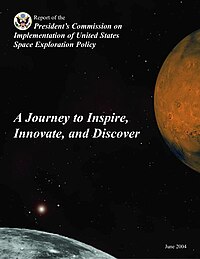
Photo from wikipedia
Inspecting surface conditions in 3-D environments such as steel bridges is a complex, time-consuming, and often hazardous undertaking that is an essential part of tasks such as bridge maintenance. Developing… Click to show full abstract
Inspecting surface conditions in 3-D environments such as steel bridges is a complex, time-consuming, and often hazardous undertaking that is an essential part of tasks such as bridge maintenance. Developing an autonomous exploration strategy for a mobile climbing robot would allow for such tasks to be completed more quickly and more safely than is possible with human inspectors. The exploration strategy tested in this paper, called the nearest neighbors exploration approach (NNEA), aims to reduce the overall exploration time by reducing the number of sensor position evaluations that need to be performed. NNEA achieves this by first considering at each time step only a small set of poses near to the current robot as candidates for the next best view. This approach is compared with another exploration strategy for similar robots performing the same task. The improvements between the new and previous strategy are demonstrated through trials on a test rig, and also in field trials on a ferromagnetic bridge structure.
Journal Title: IEEE Transactions on Automation Science and Engineering
Year Published: 2017
Link to full text (if available)
Share on Social Media: Sign Up to like & get
recommendations!